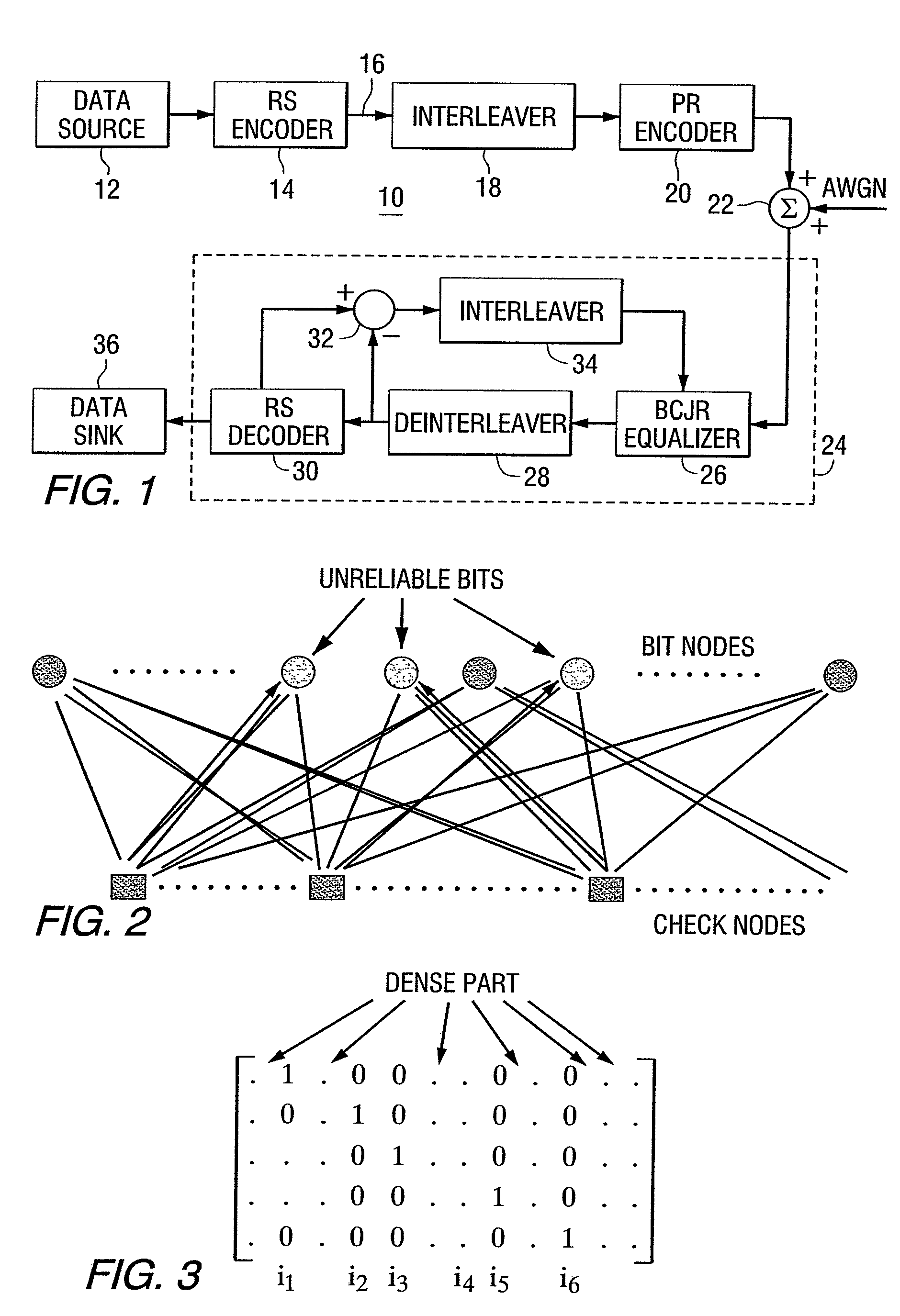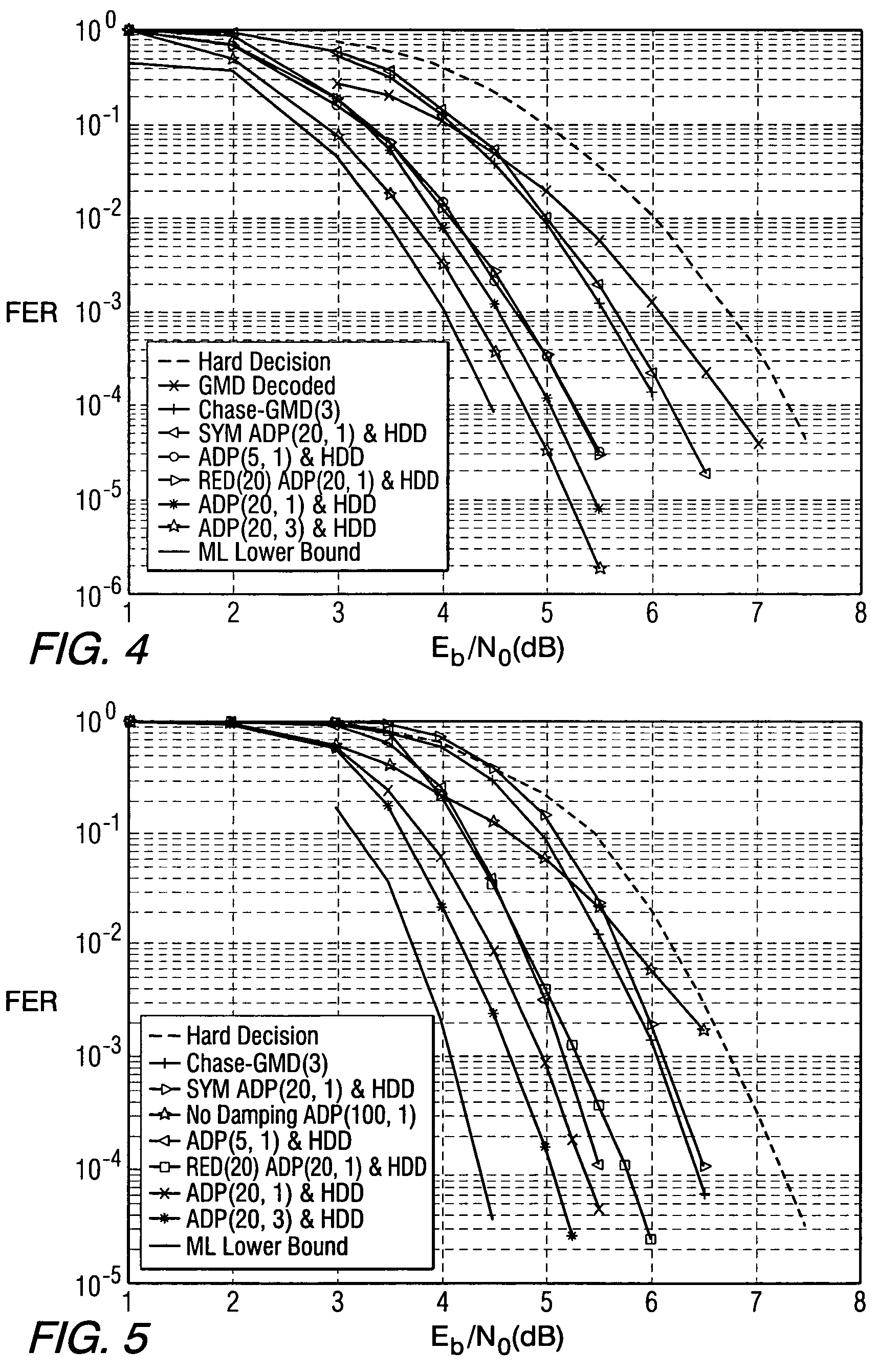Iterative decoding of linear block codes by adapting the parity check matrix
a linear block code and parity check technology, applied in the field of information bearing sequence decoding, can solve the problems of inability to decode linear block codes at high rate, and inability to detect the error floor of the maximum likelihood decoding, etc., and achieve the effect of less reliabl
- Summary
- Abstract
- Description
- Claims
- Application Information
AI Technical Summary
Benefits of technology
Problems solved by technology
Method used
Image
Examples
example 1
[0033]Consider a (7,4) Hamming code where the transmitted codeword is c=[0 1 0 1 1 0 0] and the received vector is r=[1.1 −0.6 −0.1 −1.4 −1.2 −0.1 −0.1]. The parity check matrix is
[0034]H=[010101110100110110101].
[0035]In this case, the third, sixth and seventh bits are bits corresponding to the least three magnitudes of L(ci) and, hence, are unreliable. This saturates the entire parity check matrix, meaning each row (check node) will have at least two unreliable bits and, hence, all the checks will become useless. Hence, the iterative algorithm will not proceed, meaning the extrinsic messages passed will all be of very small magnitude and will not get updated significantly.
[0036]To overcome this problem, we exploit the fact that the parity check matrix associated with a code is not unique. Note that any linear combination of the rows of the parity check matrix results in another valid parity check matrix. However, the performance of iterative decoding for a given received word will ...
PUM
 Login to View More
Login to View More Abstract
Description
Claims
Application Information
 Login to View More
Login to View More - R&D
- Intellectual Property
- Life Sciences
- Materials
- Tech Scout
- Unparalleled Data Quality
- Higher Quality Content
- 60% Fewer Hallucinations
Browse by: Latest US Patents, China's latest patents, Technical Efficacy Thesaurus, Application Domain, Technology Topic, Popular Technical Reports.
© 2025 PatSnap. All rights reserved.Legal|Privacy policy|Modern Slavery Act Transparency Statement|Sitemap|About US| Contact US: help@patsnap.com



